
As surmised in my previous post, my comment linking to Soberana’s Rome vs. Judea eventually made it on The Occidental Observer. Although I said there that Soberana’s essay was now the masthead of this blog, more precisely the masthead is the entire compilation The Fair Race’s Darkest Hour (which may or may not appear soon as a PDF, depending if I reach a deal with another editor).
However, since I am on regular feedback from the readers of Rome vs. Judea, I have been correcting the mistakes that either my proofreaders or I detect. For example, the original PDF of Rome vs. Judea was this one:
https://westsdarkesthour.com/2018/02/rome_judea.pdf
This was before I standardized British orthography instead of American orthography. That PDF also contained an erroneous footnote of mine, where I stated that the sane Nietzsche did not cross out his signature in the last words of The Antichrist. After rereading the translator’s prologue, I realised that what Nietzsche had, in fact, crossed out after he lost his mind, was the old subtitle of the book. This sort of miss-recollection happens when one reads a book years ago and writes without a fresh rereading.
The above link, that we might call the zero version of Soberana’s essay, will soon be unavailable on the web because I’ll delete it. An improved version of the same book, as you can see, has a “1” before the letters pdf:
https://westsdarkesthour.com/2018/02/rome_judea1.pdf
This newer PDF is the one that has been linked to my latest blog entries. The erroneous footnote about The Antichrist has been eliminated and the orthography standardised. This is also the PDF that I linked at The Occidental Observer.
Alas, since no manuscript is error-free, yesterday another reader detected another kind of errors: some dates of the reigns of a couple of Roman emperors. This weekend I will correct these errors and the future PDF, instead of the above “1” will have a “2”. And so on—surely #2 won’t be the ultimate PDF as readers will probably detect more errors.
With time I will remove the obsolete PDFs of Soberana’s essay. For the regular visitor, the trick would be to click on the bold-typed word within the hatnote of my latest Kriminalgeschichte translation. It will always contain the link to my updated version of Rome vs. Judea.
Category: Judea v. Rome
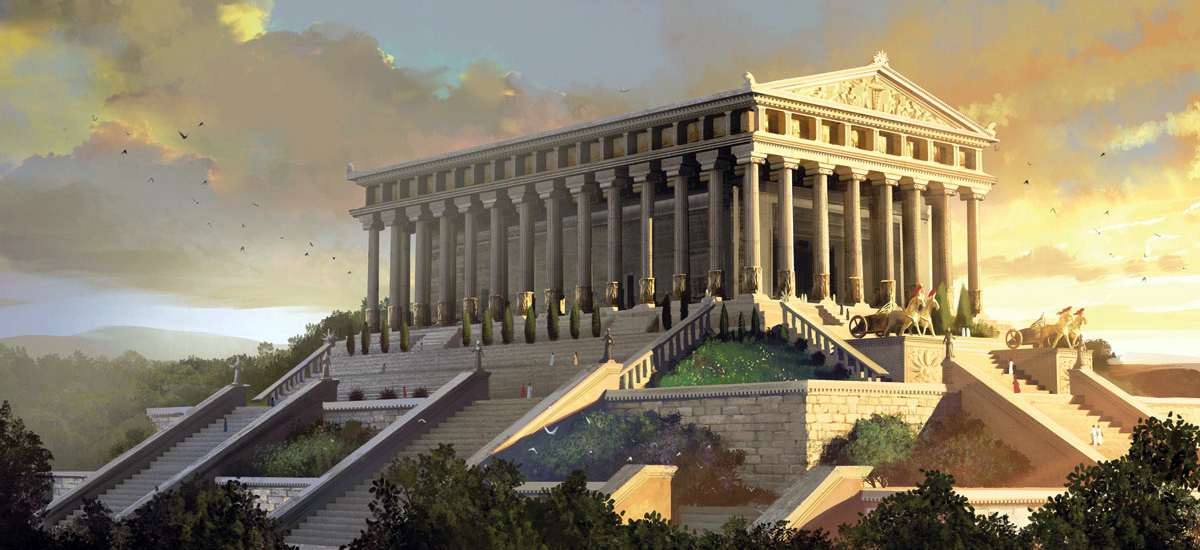
The improved Spanish-English translation of Evropa Soberana’s essay about why Christianity is ‘Semitic malware’ destined to subvert Ancient Rome (in the previous months published here under the title ‘Apocalypse for whites’), is finally available:
https://westsdarkesthour.com/2018/02/rome_judea1.pdf
Save it in your hard disks just in case that the thoughtpolice decides to deplatform us. Extreme precautions aside, this PDF will appear linked in the hatnote of every future article translation of an encyclopaedia written by a single man: Kriminalgeschichte des Christentums.
If the reader detects a syntactic oddity, let me know so that a PDF that will be linked in countless of future posts may be in top shape rhetorically.
Enjoy the real redpill!
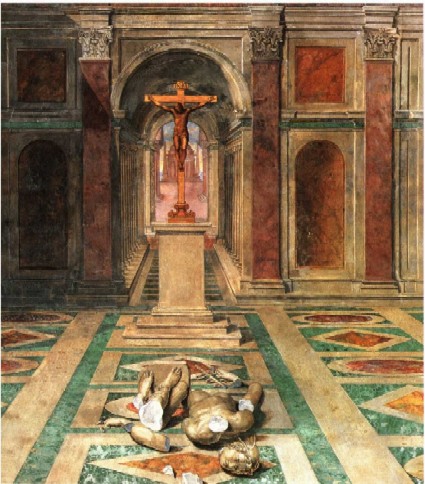 Hopefully, yesterday’s accident in Dow Jones doesn’t get worse, especially now that I’m reviewing Evropa Soberana’s Apocalypse for Whites that will be available as soon as its syntax is corrected. (It will appear with its original title: ‘Rome vs. Judaea; Judaea vs. Rome.)
Hopefully, yesterday’s accident in Dow Jones doesn’t get worse, especially now that I’m reviewing Evropa Soberana’s Apocalypse for Whites that will be available as soon as its syntax is corrected. (It will appear with its original title: ‘Rome vs. Judaea; Judaea vs. Rome.)
I’ll be busy these days correcting it. If a native English speaker wants to proofread the penultimate version of the text, so that it may appear in the 2018 edition of The Fair Race’s Darkest Hour, let me know.
Once the final version of this important text is available, I’ll link it in the hatnote of every single forthcoming translation of Kriminalgeschichte des Christentums.
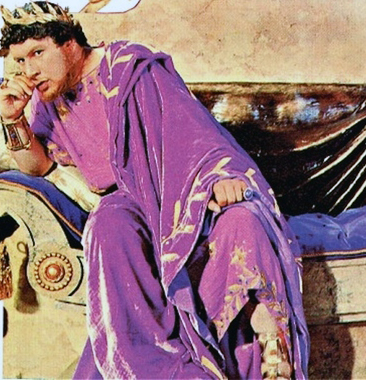 ‘Apocalypse for Whites’ (original title, ‘Rome vs. Judea’) explains wonderfully the whys of my obsession with translating Deschner’s work, Kriminalgeschichte des Christentums: the criminal history of Christianity. No single racialist text has produced such an absolute eureka! moment in my intellectual life as ‘Apocalypse for Whites’. Compared to this mother of all redpills, all the output from webzines such as The Occidental Observer or Counter-Currents seem like mere purple pills: an intermediate colour between blue and red. They promise to unplug you but in the end they take you back to the Matrix because the editors are still sleeping.
‘Apocalypse for Whites’ (original title, ‘Rome vs. Judea’) explains wonderfully the whys of my obsession with translating Deschner’s work, Kriminalgeschichte des Christentums: the criminal history of Christianity. No single racialist text has produced such an absolute eureka! moment in my intellectual life as ‘Apocalypse for Whites’. Compared to this mother of all redpills, all the output from webzines such as The Occidental Observer or Counter-Currents seem like mere purple pills: an intermediate colour between blue and red. They promise to unplug you but in the end they take you back to the Matrix because the editors are still sleeping.
Let’s recognise it: the Spaniard Evropa Soberana is a genius. Not only did he develop the New Racial Classification with a colleague. He also wrote the Sparta essay in addition to the one I just translated with the title of ‘Apocalypse for Whites’. In the 2018 edition of The Fair Race’s Darkest Hour, Soberana’s essay will appear with its original title.
The quote from The Antichrist that I put in red in § 24 of the penultimate entry of ‘Apocalypse for Whites’ hits the nail of all the nails: ‘Christians can think of themselves as anti-Jewish without understanding that they are the ultimate conclusion of Judaism’.
Any racist who is under the illusion that his mind no longer has ‘Semitic’ malware installed after Constantine handed over the empire to the Semitic bishops, would do well to remember these lines of Francis Parker Yockey. Who among the white nationalists has really transvalued all his values (Umwertung aller Werte), the last words of The Antichrist before Nietzsche’s Law against Christianity?
But Yockey cannot be considered the embodiment of the new paradigm that supplants Christ (a character that, as it appears in the Gospels, did not even exist). Nor could Nietzsche be considered the Antichrist even though he began to see the light of the tragedy that befell upon the West after Constantine.
Potentially, Adolf Hitler can be the new guiding star—if only white nationalists wake up. But in order for this new religion to embody the transvalued values it is necessary to lay the foundations first.
Before continuing with the translation of the criminal history of Christianity of Deschner I must therefore reproduce, chapter by chapter, the booklet Faith of the Future by Matt Koehl: a prelude to a Hitlerism that should replace the Alt-Right if the race is going to make it.
by Evropa Soberana
In conclusion
Primitive Christianity was characterized by its intolerance and intransigence, and by considering itself as the only way of salvation for all men on the planet. These characteristics were inherited from Judaism, from which it came and which it imitated.
Christianity shows, paradoxically, that to consider all human beings equal is the worst form of intolerance: because it is assumed as a dogma of faith that the same religion or moral is valid and obligatory for all men, and therefore it is imposed, even against their will. This aspect was renewed later with the other great and virulent egalitarian doctrines: democracy and communism.
The Aryans, accepting the difference of peoples, also accepted that they worshiped gods other than their own and had different customs; and they would never have thought of preaching their religion or their morals outside of their town. It would have seemed ridiculous to preach Odin’s worship among blacks, for example; and it made no difference to them that the Semites worshiped Molech.
The tactic of the old European was always to dominate through military triumph, not to forcefully convert or manipulate thoughts. The reaction of Christianity, on the other hand, was to wipe out everything that could remind us our old beliefs and traditions. Any medicinal knowledge of plants or animals was branded as heresy and persecuted. In fact, any kind of knowledge that was not Judeo-Christian was persecuted conscientiously. Spiritual terror had made its appearance in Europe.
This is Christianity, and what came after: feints, collages, palimpsests and mixtures of it with paganism in unstable combinations that never finished curdling in the confused European collective unconscious. In those days the schizophrenia of the current West started: the debate between the heroic Greco-Roman heritage or the humanist Judeo-Christian heritage.
The founders and the great conquerors had wanted their peoples to triumph and be eternal on Earth. They did not achieve it in the long term, and all disappeared. The Romans, then, went to swell that macabre list. In the West, the future of millennia belonged to the Germans, who established throughout Western Europe feudal kingdoms where they rose as aristocracy.
I have listed facts that marked the end of Classical Antiquity with all its wisdom, and the beginning of the Dark Ages. This age used as a tool the Germans, but the Germans were not guilty. They only gave the coup de grâce to a decadent monster—and it was precisely the Germans who preserved Roman works of art from Christian destruction when they seized power (consider the case of King Theodoric).
The occultation would last in Europe until the time of Catharism; of the Vikings and Crusades in the 11th century: when the European knights discovered the tradition that the East had kept. Some friars devoted themselves to collecting natural knowledge such as medicine or botany. The Mesopotamian, Egyptian, Persian and to some extent Greek and Hindu legacies were preserved by the Islamic civilisation which, unlike Christianity, not only did not destroy the pagan legacy, but kept it.
The resurgence of European spirituality came from the warrior and chivalric castes. And the results, some cleaner than others, were the Holy Roman-Germanic Empire, the Vikings, the Occitan civilization, the Templars, the Italian Renaissance with its fascination for the Greco-Roman world, and the Spanish empire.
There are those who get themselves into a mess with the ‘Christian heritage’ of Europe. I do not. I see Europeans living with some customs and their natural rites, beautiful and harmonious, which automatically led to the most normal thing in the world, thus taking part in that immense orchestra that is the Earth.
I see a fanatical creed preached by Semitic fundamentalists from the East and Africa, who inflamed the spirits of the world’s scum against the good people; against the native Europeans, against the representatives of order and light. They said that our ancestral customs were abominations. They said that those who practiced them were sinners. They said that our science was demonic sorcery, and our art, blasphemy.
They said that whoever did not kneel before a strange new oriental god deserved the worst torments. They cursed the strong, the nobles, the fighters, the pure, the philosophers and the wise, and blessed the slaves, the sick, the trampled, the prostitutes, the ignorant and the cowardly.
They destroyed the legacy that we had accumulated for centuries. They killed our leaders. They put an end to an Empire that could well, under Germanic influence, spread throughout the world.
They plunged Europe into ignorance and banned knowledge. For centuries, they spread depression, guilt and the feeling of sin, introducing into Europe that cancer that is the Old Testament, and that castrating poison that is the New Testament.
If Europe could still thrive in these conditions, it was not thanks to Christianity but in spite of it, and thanks to the things that Christianity had not yet touched.

This piece is from a statue of the emperor Hadrian that should have measured about five meters, and was found in Sagalassos, present south-central Turkey, where Christianity took root early.
In short, Christianity was a subversive movement of agitation against Rome, against Greece and, ultimately, against the European world.
We have to assume that what has come down to us from the Greco-Roman world is only a tiny part of what was really there, and that it was taken away by the Judeo-Christian destruction.
Christianity, as a slave rebellion devised and led by Jews with the aim of destroying Roman power—and, ultimately, all European power—was and is a doctrine aimed at converting vigorous peoples into domesticated flock of sheep.
Apocalypse for whites • XXXVII
by Evropa Soberana
Judaea, victorious
416 CE: A famous Christian leader known as ‘Sword of God’ exterminates the last ‘pagans’ of Bithynia, Asia Minor. That year, in Constantinople all public officials, army commanders and judges who are not Christians are fired.
423 CE: The emperor decrees that ‘paganism’ is ‘a cult of the devil’ and orders that all those who continue to practice it be imprisoned and tortured.
429 CE: The Athenians are persecuted, and the temple of the goddess Athena—the famous Parthenon of the Acropolis—is looted.
435 CE: In this year occurs the most significant action on the part of Emperor Theodosius II: He openly proclaims that the only legal religion in Rome apart from Christianity is Judaism!
Through a bizarre, subterranean and astonishing struggle, Judaism has not only persecuted the old culture, and Rome, its mortal archenemy, adopts a Jewish creed—but the Jewish religion itself, so despised and insulted by the old Romans, is now elevated as the only official religion of Rome along with Christianity!
We must recognise the conspiratorial astuteness and the implacable permanence of objectives of the original Judeo-Christian nucleus! What they did was literally turn the tables on their favour: turn Rome into anti-Rome; put at the service of Jewry everything that the Jews so hated; take advantage of the strength of Rome and its state apparatus, to put Rome against Rome itself in a sinister political- spiritual jiu-jitsu—from spitted slaves, trampled, insulted, despised and looked down, to absolute spiritual masters of the Roman Empire!
In a nutshell, Christianity was a subversive movement of agitation against Rome, against Greece and, ultimately, against the European world.
As already stated, we have to assume that what has come down to us from the Greco-Roman world is only a tiny part of what was really there and that it was taken away by the Judeo-Christian destruction. Christianity, as a slave rebellion devised and led by Jews with the aim of destroying Roman power—and, ultimately, all European power—was and is a doctrine aimed at converting vigorous peoples into a domesticated flock of sheep. Nietzsche understood it perfectly, but when will we be able to fully assimilate what this meant and what it still means today?
Read the whole Spanish-English translation: here.
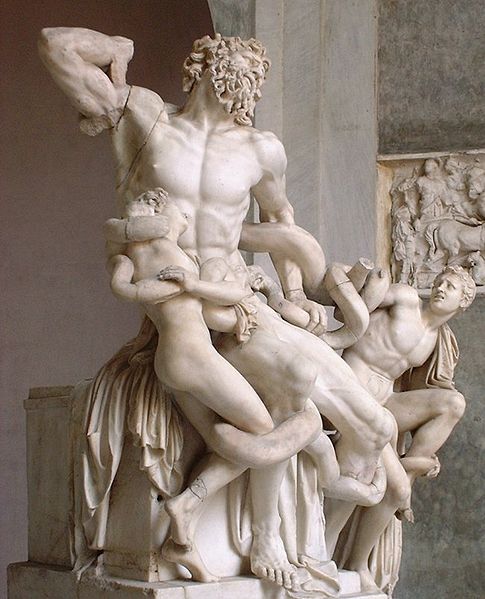
Above, Laocoön and His Sons. The sculpture that once was in the palace of Emperor Titus represents the tragic agony of the Ancient World: Classic, athletic, wise, beautiful, courageous and close to the gods, at the hands of the Eastern serpent.
by Evropa Soberana
The martyrdom of Hypatia as an example of Christian terrorism
Alexandria, Egypt, year 415. The protagonist is Hypatia (370-415), philosopher and mathematician instructed by her father, the also famous philosopher and mathematician Theon of Alexandria. Hypatia’s biographers say that in the morning she spent several hours in physical exercise, and that afterwards she took relaxing baths that helped her concentrate her mind to devote the rest of the day to the study of philosophy, music and mathematics.
Hypatia was virgin and chaste; that is, she was at the level of a priestess. She was, in short, a wise woman, ‘a perfect human being’, just as her father had wanted. Hypatia also ran a philosophical school from which women were excluded. (This is to give thought to the feminists who have tried to ‘feminize’ the figure of Hypatia in recent times.)
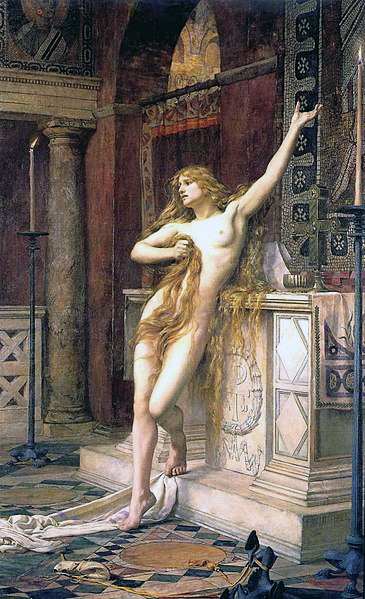 Hypatia, by Charles William Mitchell.
Hypatia, by Charles William Mitchell.
The bigwig of Alexandria during that time was Archbishop Cyril (370-444), nephew of the aforementioned Theophilus. He had the title of patriarch, an ecclesiastical honour that amounted almost to that of the pope, and which was held only by the archbishops of Jerusalem, Alexandria and Constantinople: that is, the most Jewish and Christian cities of the Roman Empire. During this time there was another mass rebellion; once again, street fights, tensions and settling of scores between Christians and Hellenists followed each other.
Archbishop Cyril had started a persecution of Alexandria scholars, twenty-four years after the library fire. This time, more radicalized, the Christians murdered anyone who refused to convert to the new religion. Hypatia, at that time director of the museum, where she dedicated herself to the philosophy of Plato, was one of those people, for which she was accused of conspiring against the archbishop.
Days after the accusation, friars called parabalani, fanatical monks in charge of the ‘dirty work’ of the archbishop and coming from the church of Jerusalem of St. Cyril,[1] kidnapped her from her carriage, beat her, stripped her and dragged her throughout the city, until they reached the church of Caesarea. There, at the orders of a lector named Peter, they raped her several times and then skinned her and ripped the flesh with sharp oyster shells.
Hypatia died raped, skinned and bleeding in atrocious pains. After this, they dismembered her corpse, took her pieces through Alexandria as trophies and then to a place called Cinarion, where they were burned. The archbishop who ordered his martyrdom is remembered by the Church as St. Cyril of Alexandria.
Only a crowd sick with resentment and hatred, and enraged by commissaries expert in the art of raising slaves, could carry out this act, which disgusts any person with a minimum of decency. Hypatia was the perfect victim for a ritual sacrifice: European, beautiful, healthy, wise, Hellenistic and virgin. And that is what excites slaves the most when sacrificing the innocence and kindness of the victim.
The cruelty shown, even in regard to the destruction of her corpse, indicates that the Christians greatly feared Hypatia and all that she represented. The death of the scientist, in addition to being perfectly illustrative of the atrocities committed by Christians at this time, inaugurated an era of persecution of Hellenistic priests in North Africa, especially directed against the Egyptian priesthood. Most of them were crucified or burned alive.
Hypatia’s atrocity is described here because it is well known; and it is shocking that it happened to an unarmed, defenceless and harmless woman, but let us not think of it as an isolated case. Many simple Hellenists who did not look for trouble were sacrificed in a similar or worse way, and would continue to be so for many centuries.
_______________
[1] Note from the Ed.: Probably ethnic Semites.
by Evropa Soberana
The destruction of the Greco-Roman World – 3
(Fifth century)
401
A crowd of Christians lynched the Hellenists in Carthage, destroying temples and idols. In Gaza, the Hellenists are lynched at the request of Bishop Porphyry, who also orders the destruction of the nine temples still standing in the city. That same year, the 15th Council of Chalcedon commands the excommunication—even after their deaths!—of Christians who keep good relationships with their Hellenist relatives.
St. John Chrysostom, ‘Holy and Father of the Church’, raises funds with the help of rich, boring, idle and resentful Christian women against the patriarchal Roman worship of perfection and war (such women are fascinated by the sickly Christian sadomasochism). Thus financed, he carries out a work of demolition of Greek temples. Thanks to John Chrysostom, the ancient temple of Artemis in Ephesus is demolished.
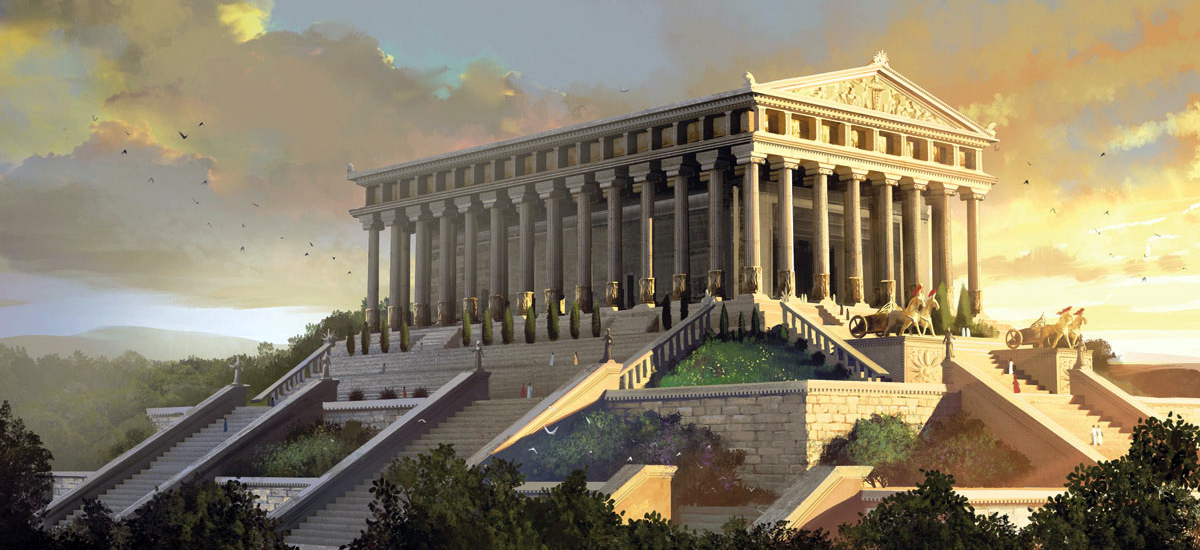
The immense temple of Artemis in Ephesus was one of the Seven Wonders of the Ancient World and had been built in the 6th century BCE over an area considered sacred since, at least, the Bronze Age. Its construction took 120 years and it could be said that it was perfectly comparable to a cathedral. The Christians end the existence of this
almost millennial building.
406-407
Emperor Arcadius returns to launch a decree in which he prohibits all non-Christian cults, which means that at this point so-called ‘paganism’ persists. A group of foederati tribes (federated to Rome, residents within its borders and faithful defenders of the empire), the Vandals, the Swabians and the Alans (the latter of Iranian origin, not Germanic) invaded France, destined for Spain.
408
Emperor Honorius of the Western Empire and Emperor Arcadius of the Eastern Empire ordered together that all Greco-Roman sculptures be destroyed. There are again destructions of temples, massacres and fires of their writings. Around this time, the famous African St. Augustine, Bishop of Hippo, ‘Saint, Father and Doctor of the Church’ massacred hundreds of adepts of the old ways in Calama, Algeria. (It will not be long before he died at the hands of the Vandals, a Germanic people that doesn’t walk around nonsense.) Augustine also established the persecution of judges who show mercy to the ‘idolaters’.
This same year of 408 the emperor Arcadius dies, being succeeded by the Emperor Theodosius II. To get an idea of the fanaticism, dementia and moral quality of this abortive subhuman, suffice it to say that he ordered children to be executed for playing with pieces of destroyed Greco-Roman statues. According to the same Christian historians, Theodosius II ‘meticulously followed the Christian teachings’.
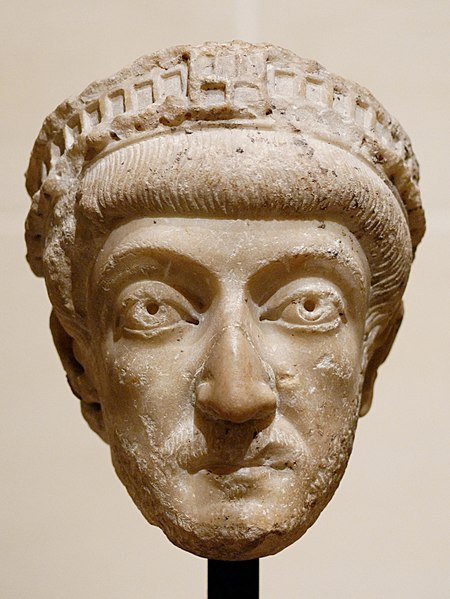
Emperor Theodosius II. Judging by the quality of the portrait, the
empire was not in good shape under his reign, or perhaps
it is that the old sculptors had been killed.
While all this takes place, this same year of 408 a Roman chief of Germanic origin who had courageously defended the borders of the empire, Stilicho the vandal, is executed by a party of decadent Romans envious of his triumphs. After his unjust death, this party gives a sort of coup d’état and the women and children—we are talking about a minimum of 60,000 people—of the German foederati are massacred throughout Italy by the Christians. After this cowardly act the fathers and husbands of these families (30,000 men who had been faithful soldiers of Rome) went over the ranks of the Visigothic king Alaric, devastated with rage and calling for revenge against the murderers.
409
The Roman Empire collapses in irremissibly crisis, in filthy corruption and overwhelmed by the Germans. But the powerful Christians are in a hurry to eradicate the Greco-Roman legacy before the Germans discover it—lest the Germanised empire becomes Greece-Rome II! That same year, Swabians, Vandals and Alans cross the Pyrenees and invade Spain.
410
An army of Visigoths and other German allies loot Rome itself, continuing later in the south of France, Spain and Africa. From there, they try to dominate the Mediterranean.
by Evropa Soberana
The destruction of the Greco-Roman World – 2
(Fourth century – Cont.)
372
Emperor Valentinian orders the governor of Asia Minor to exterminate all the Hellenes (meaning as such the non-Christian Greeks of ancient Hellenic lineage, i.e., the Aryans; and especially the old Macedonian ruling caste) and destroy all documents relating to their wisdom. In addition, the following year he again prohibits all methods of divination.
It is around this time when Christians coined the contemptuous term ‘pagan’ to designate the Gentiles, that is, all who are neither Jews nor Christians. ‘Pagan’ is a word that comes from the Latin pagani, which means villager. In the dirty, corrupt, decadent, cosmopolitan and mongrelised cities of the now decadent Roman empire, the population is essentially Christian but in the countryside, the peasants, who keep their heritage and tradition pure, are ‘pagans’. It is in the countryside, oblivious to multiculturalism, where the ancestral memory is preserved. (Both Christians and communists did their best to end the way of life of the landowner, the farmer and the peasant.)
However, this peasant ‘paganism’, stripped of priestly leadership and temples and finally plunged into persecution and miscegenation, is doomed to eventually become a bundle of popular superstitions mixed with pre-Indo-European roots, although something of the traditional background will always remain, as in the local ‘healers’ and ‘witches’ who for so long subsisted despite the persecutions.
Ending classical culture was not so easy. It was not easy to find all the temples or destroy them. Nor was it easy to identify all the priests of the old religion, or those who practiced their rites in secret. That was a long-term task for a zealous, meticulous and fanatical elite of ‘commissaries’ that would last for many, many generations: centuries and centuries of spiritual terror and intense persecution.
375
The temple of the god Asclepius in Epidaurus, Greece is forcibly closed.
378
The Romans are defeated by the Gothic army in the battle of Hadrianopolis. The emperor intervenes and, through a sagacious diplomacy, makes allies (foederati) of the Goths, a Germanic people originally from Sweden: famous for their beauty, and who had a kingdom in what is now Ukraine. Some time later, in 408, after the fall of Stilicho (a general of Vandal origin who served Rome faithfully but who was betrayed by a Christian and an envious political mob), the women and children of these Germans foederati will be massacred by the Romans, propitiating that the men, prisoners of the rage, join en masse the German commander Alaric.
380
Emperor Theodosius I (Theodosius the Great for Christianity) decrees, through the edict of Thessalonica, that Christianity is officially the only tolerable religion in the Roman Empire, although this has been obvious for years. Theodosius calls non-Christians ‘crazy’ as well as ‘disgusting, heretics, stupid and blind’.
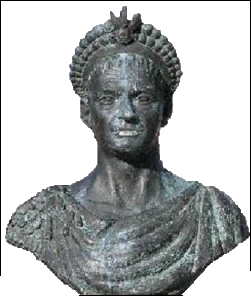
Emperor Theodosius I
Bishop Ambrose of Milan starts a campaign to demolish the temples in his area. In Eleusis, ancient Greek sanctuary, Christian priests throw a hungry crowd, ignorant and fanatical against the temple of the goddess Demeter. The priests are almost lynched by the mob. Nestorius, a venerable old man of 95 years, announces the end of the mysteries of Eleusis and foresees the submergence of men in darkness for centuries.
381
Simple visits to the Hellenic temples are forbidden, and the destruction of temples and library fires throughout the eastern half of the empire continues. The sciences, technology, literature, history and religion of the classical world are thus burned. In Constantinople, the temple of the goddess Aphrodite is turned into a brothel, and the temples of the god Helios and the goddess Artemis are converted into stables! Theodosius persecutes and closes the mysteries of Delphi, the most important of Greece, which had so much influence on the history of ancient Greece.
382
The Jewish formula Hellelu-Yahweh or Hallelujah (‘Glory to Yahweh’) is instituted in Christian Masses.
384
The emperor orders the praetor prefect Maternus Cynegius, uncle of the emperor and one of the most powerful men of the empire, to cooperate with the local bishops in the destruction of temples in Macedonia and Asia Minor—something that Cynegius, a Christian fundamentalist, does it happily.
385-388
Maternus Cynegius, encouraged by his fanatical wife, and together with Bishop St Marcellus, organises bands of Christian ‘paramilitary’ murderers who travel throughout the Eastern Empire to preach the ‘good news’; that is, to destroy temples, altars and reliquaries.
They destroy, among many others, the temple of Edessa, the Kabeirion of Imbros, the temple of Zeus in Apamea, the temple of Apollo in Didyma and all the temples of Palmyra. Thousands are arrested and sent to the dungeons of Scythopolis, where they are imprisoned, tortured and killed in subhuman conditions. And in case any lover of antiquities or art comes up with restoring, preserving or conserving the remains of the looted, destroyed or closed temples, in 386 the emperor specifically prohibits the practise!
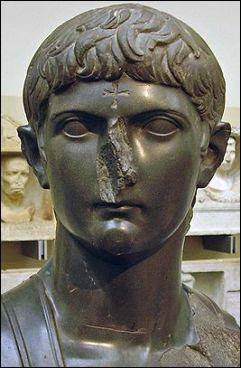
Bust of Germanicus defaced by Christians,
who also engraved a cross on his forehead.
388
The emperor, in a Soviet-like measure, forbids talks on religious subjects probably because Christianity cannot be sustained and can even suffer serious losses through religious debates. Libanius, the old orator of Constantinople once accused of magician, directs to the emperor a desperate and humble epistle Pro Templis (‘In Favour of the Temples’), trying to preserve the few remaining temples. The emperor did not pay attention to him.
389-390
All non-Christian holidays are banned. The antifa of those times, headed by hermits of the desert, invade the Roman cities of East and North Africa. In Egypt, Asia Minor and Syria, these hordes sweep away temples, statues, altars and libraries: killing anyone who crosses their path. Theodosius I orders the devastation of the sanctuary of Delphi, centre of wisdom respected throughout the Hélade, destroying its temples and works of art.
Bishop Theophilus, patriarch of Alexandria, initiates persecutions of the adepts of classical culture, inaugurating in Alexandria a period of real battles on the streets. He converts the temple of the god Dionysus into a church, destroys the temple of Zeus, burns the Mithraic and profanes the cult images. The priests are humiliated and mocked publicly before being stoned.
391
A new decree of Theodosius specifically prohibits looking at the shattered statues! The persecutions in the whole empire are renewed. In Alexandria, where the tensions were always very common, the Hellenistic minority, headed by the philosopher Olympius, carries out an anti-Christian revolt.
After bloody street fights with dagger and sword against crowds of Christians who outnumber them greatly, the Hellenists entrench themselves in the Serapeum, a fortified temple dedicated to the god Serapis. After encircling—practically besieging—the building the Christian mob, under the patriarch Theophilus, breaks into the temple and murder all those present; desecrates the cult images, plunders the property, burns down its famous library and finally throws down all the construction.
It is the famous ‘second destruction’ of the Library of Alexandria, jewel of ancient wisdom in absolutely every field, including philosophy, mythology, medicine, Gnosticism, mathematics, astronomy, architecture or geometry: a spiritual catastrophe for the heritage of the West. A church was built on its remains.
392
The emperor forbids all ancient rituals, calling them gentilicia superstitio, superstitions of the Gentiles.
The persecutions return. The mysteries of Samothrace are bloodily closed and all their priests are killed. In Cyprus, the spiritual and physical extermination is led by the bishops St Epiphanius—born in Judea and raised in a Jewish environment, with Jewish blood himself. The emperor gives carte blanche to St. Epiphanius in Cyprus, stating that ‘those who do not obey Father Epiphanius have no right to continue living on that island’. Thus emboldened, the Christian eunuchs exterminate thousands of Hellenists and destroy almost all the temples of Cyprus. The mysteries of the local Aphrodite, based on the art of eroticism and with a long tradition, are eradicated.
In this fateful year there are insurrections against the Church and against the Roman Empire in Petra, Areopoli, Rafah, Gaza, Baalbek and other eastern cities. But the Eastern-Christian invasion is not going to stop at this point in its push towards the heart of Europe.
393
The Olympic Games are banned, as well as the Pythia Games and the Aktia Games. The Christians must have sensed that this Aryan cult for ‘profane’ and ‘mundane’ sports of agility, health, beauty and strength must logically belong to the Greco-Roman culture, and that sport is an area where Christians of the time could never reign. Taking advantage of the conjuncture, the Christians plunder the temple of Olympia.
394
In this year all gymnasiums in Greece are shut down by force. Any place where the slightest dissidence flourishes, or where unchristian mentalities thrive, must be shut down. Christianity is neither a friend of the muscles nor of athletics; or of triumphant sweat: but of the tears of impotence and of terrifying tremors.
That same year, Theodosius removed the statue of Victory from the Roman Senate. The war of the statues thus ended: a cultural conflict that pitted Hellenist and Christian senators in the Senate, removing and restoring the statue numerous times. The year 394 also saw the closing of the temple of Vesta, where the sacred Roman fire burned.
395
Theodosius dies, being succeeded by Flavius Arcadius (reigned between 395-408). This year, two new decrees reinvigorate the persecution. Rufinus, eunuch and prime minister of Arcadius, makes the Goths invade Greece knowing that, like good barbarians, they will destroy, loot and kill. Among the cities plundered by the Goths are Dion, Delphi, Megara, Corinth, Argos, Nemea, Sparta, Messenia and Olympia. The Goths, already Christianized in Arianism, kill many Greeks; set fire to the ancient sanctuary of Eleusis and burn all its priests, including Hilary, priest of Mithras.
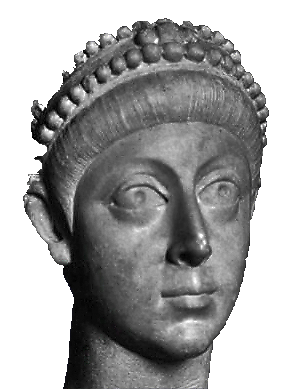
The emperor Arcadius. At first glance an eunuch,
a brat, especially when compared to the Roman emperors
and soldiers of yore.
396
Another decree of the emperor proclaims that the previous culture will be considered high treason. Most of the remaining priests are locked in murky dungeons for the rest of their days.
397
The emperor literally orders to demolish all the remaining temples.
398
During the Fourth Ecclesiastical Council of Carthage (North Africa, now Tunisia) the study of Greco-Roman works is forbidden to anyone, even the Christian bishops themselves.
399
The emperor Arcadius, once again, orders the demolition of the remaining temples. At this point, most of them are in the deep rural areas of the empire.
400
Bishop Nicetas destroys the Oracle of Dionysus and forcibly baptizes all non-Christians in the area. By this final year of the fourth century, a definite Christian hierarchy has already been established which includes priests, bishops, archbishops of larger cities and the patriarchs: the archbishops responsible for major cities, namely Rome, Jerusalem, Alexandria and Constantinople.
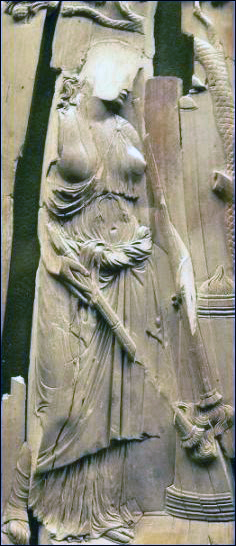
To this image of a priestess of Ceres, the Roman Demeter, goddess of agriculture and grain, patiently carved on ivory around the year 400 and of an unprecedented beauty, the Christians mutilated her face and threw it into a well in Montier-en-Der, a later abbey in the northeast of France.
It is possible that the image was not thrown into the pit because of hatred (the Christians were more prone to directly destroy), but that the owners got rid of her for fear that the religious authorities would find it. Impossible to know the amount of artistic representations, even superior to this one in beauty, that were destroyed, and of which nothing has remained.
by Evropa Soberana
The anti-Hellenist genocide continues, with more virulence
Julian, the last patriotic emperor of Rome, is succeeded by Emperor Flavius Jovian: a fundamentalist Christian who reinstates terror, including the Scythopolis camps. In 364 he orders the burning of Antioch’s library. We must assume that what has come to us today from the philosophy, science, poetry and art in general of the classical era is nothing but a mutilated dispossession of what was left behind by Christian destruction.
Through a series of edicts, the emperor decrees the death penalty for all individuals who worship gods instead of the god of the Jews (including domestic and private worship) or practice divination, and all the assets of the temples of the old religions are confiscated. With a decree of 364, the emperor forbids non-Christian military leaders to command over Christian troops.
That same year, Flavius Jovian is succeeded by Emperor Valentinian, another insane fundamentalist. In the eastern part, his brother Valens continued the persecution of the followers of classical culture, being especially cruel in the easternmost part of the empire. In Antioch, he executed the former governor and the priests Hilary and Patrician.
The philosopher Semonides is burned alive and Maximus, another philosopher, is decapitated.[1] All the Neo-Platonists and loyal men to Emperor Julian are persecuted with fury. At this point there should already be a strong anti-Christian reaction from the part of the wise men and all the patriots in general. But it was too late; and all they had left was to preserve their knowledge in some way.
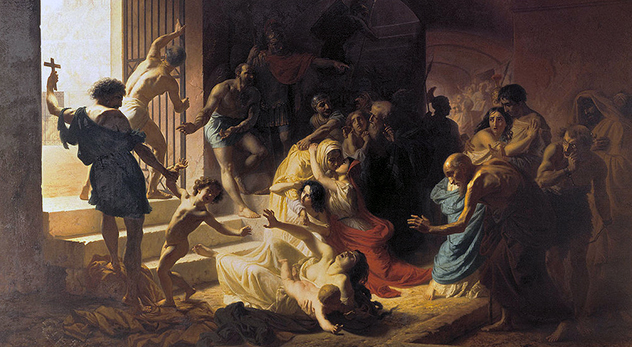
In the squares of the eastern cities huge bonfires are erected where the sacred books, the Gnostic wisdom, the Egyptian teachings, the Greek philosophy, the Roman literature burns… The classic world is being destroyed, and not only in that present, but also in the past and in the future. The Christian fanatics want, literally, to erase all traces of Egypt, Greece and Rome; that nobody knows that they ever existed and, above all, know what the Egyptians, the Greeks and the Romans have said, thought and taught.
_____________________
[1] Maximus of Ephesus is mentioned in my previous Julian entry: a novel in which the author has him playing an important role in the plot (see also Kriminalgeschichte 43).